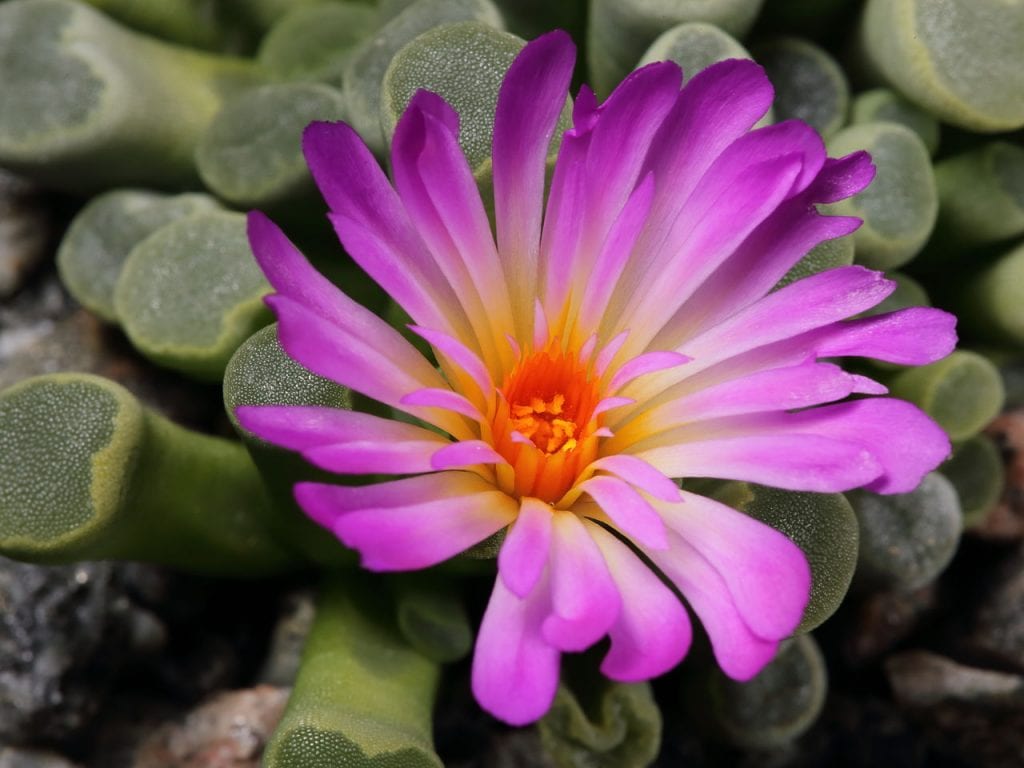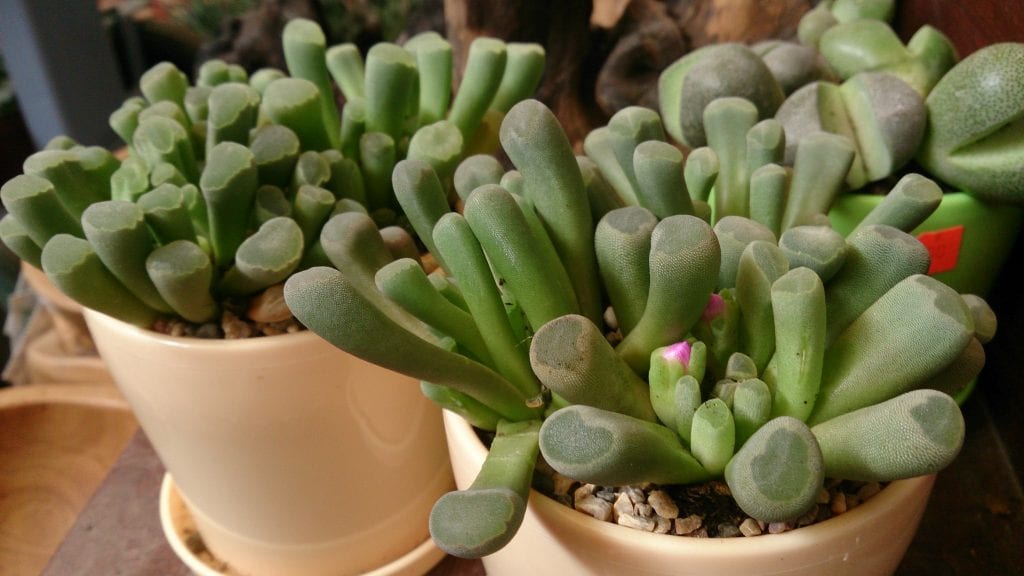
La Frithia pulchra It is one of those succulent plants that, due to its size, must always be cultivated in a pot so as not to lose sight of it, and it reaches a maximum height of only 6 centimeters. It is so small that if it were planted in the garden, the herbs would most likely not allow it to grow.
But this is not a problem; quite the contrary: its flowers are spectacular, of a beautiful pink color. That alone is worth cultivating.
Characteristics of the Frithia pulchra

Our protagonist is a plant belonging to the botanical family Aizoaceae and the subfamily Ruschioideae, and it is native to South Africa, specifically the Transvaal, where the sand can cover it almost completely. Despite this, it can continue to breathe and photosynthesize, which is why it is considered a window plant.
Its leaves are fleshy, more or less tubular, and very thin. In summer produces pink flowers very striking, which measure about 2cm in diameter. Not to be confused with Fenestraria since, although they are practically identical, its flowers can only be yellow or white.
How do you take care of yourself?

If you want to have a Frithia pulchra, follow our advice:
- Location: outside in full sun; indoors in a room with plenty of light.
- Irrigation: water two to three times a week in summer, and one to two times a week the rest of the year.
- Substratum: very porous. It is highly recommended to use akadama, pumice or river sand. It can also be mixed with 20% black peat.
- Subscriber: in spring and summer it must be paid with mineral fertilizers, such as Nitrofoska or Osmocote, pouring a small spoonful on the surface of the substrate once every 15 days.
- Transplant: it will be enough to transplant it once or twice, in spring, moving it to a somewhat larger pot each time.
- Rusticity: due to its origin, it is very sensitive to cold. It supports very mild and occasional frosts down to -1ºC.
- Pests: snails. Be very careful if you have it outside, as these mollusks can kill it in a matter of a few days. To avoid this, you can use molluscicides or snail repellants.
What did you think of this plant?